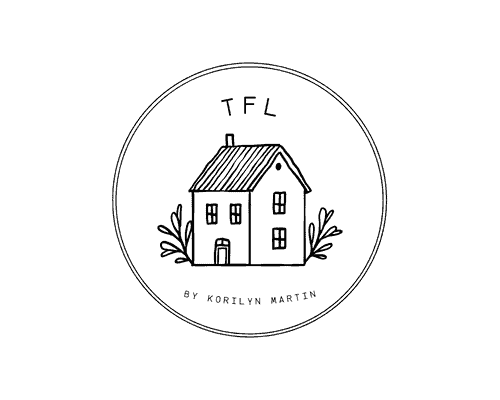10 Tips For Choosing The Right Light Fixtures In Your Kitchen
Do you ever look around your kitchen and feel like something is just off? Maybe the light fixtures make the space feel dated or too bright. If you’re looking to update your kitchen lighting, but aren’t sure where to start, this post is for you!
I believe that there’s nothing like a well-lit kitchen; it instantly makes the room feel warm and inviting. And choosing the right fixture for your kitchen can make a huge statement!
With so many options available, it can be hard to know which ones will provide the desired effect. This guide provides tips for selecting light fixtures that will perfectly update your kitchen. If you’re replacing your kitchen light fixtures, read on for some savvy tips!
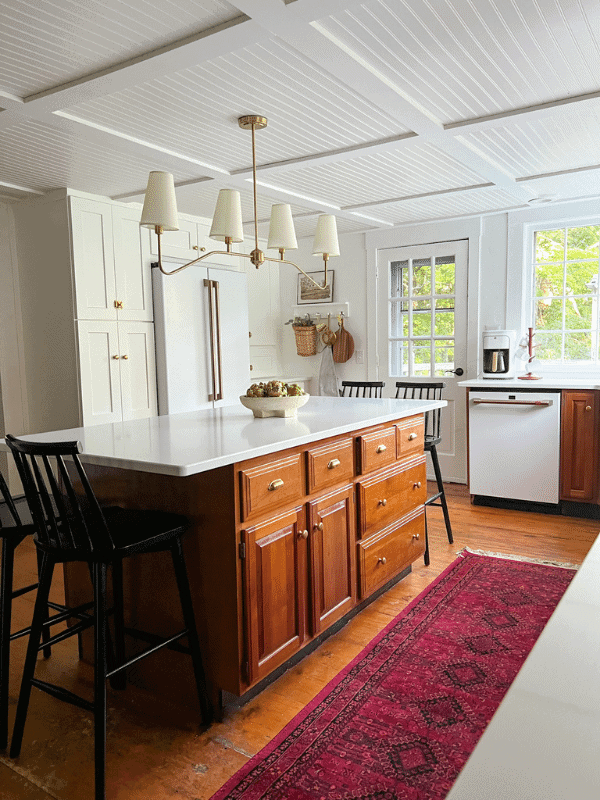
Things To Consider Before Updating The Light Fixtures In Your Kitchen
Is your kitchen in need of a refresh? Are you thinking of painting your cabinets? Are the light fixtures looking a little worse for wear? Updating your kitchen light fixtures will give your kitchen a new look without spending a fortune.
However, before you rush out and buy some new lights, there are some things you need to remember. So, if you’re giving your kitchen a facelift, here’s what you need to consider:
What Does Your Existing Lighting Look Like?
I don’t just mean style, but is it, for instance, a pendant light, chandelier, track lighting, etc.? How many junction boxes are there?
This will help narrow down what you choose for your new fixture, unless you plan on hiring this job out. Hiring out is great, if you can afford it.
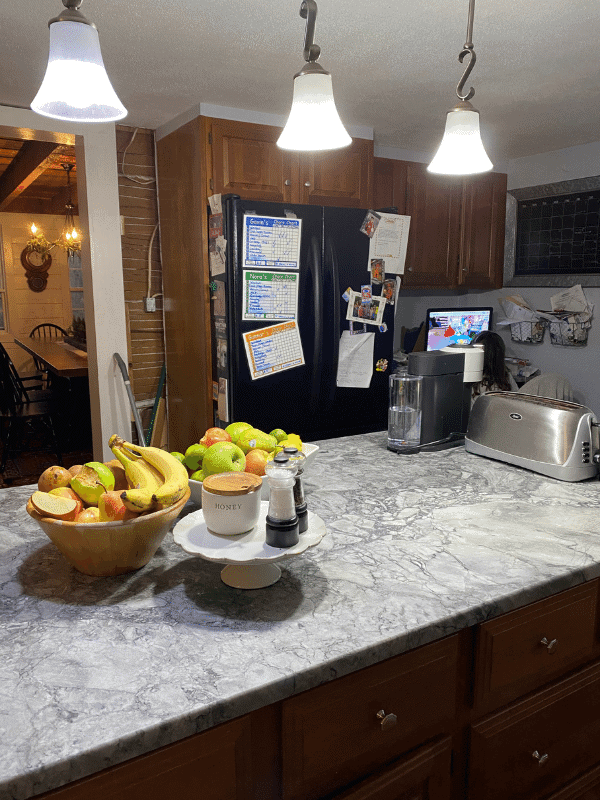
Don’t Forget The Switch Covers
If you’re going for a sleek new modern light fixture in an all-white kitchen, but you’ve forgotten to switch out the old 70s yellow switch covers, it could throw off your new design.
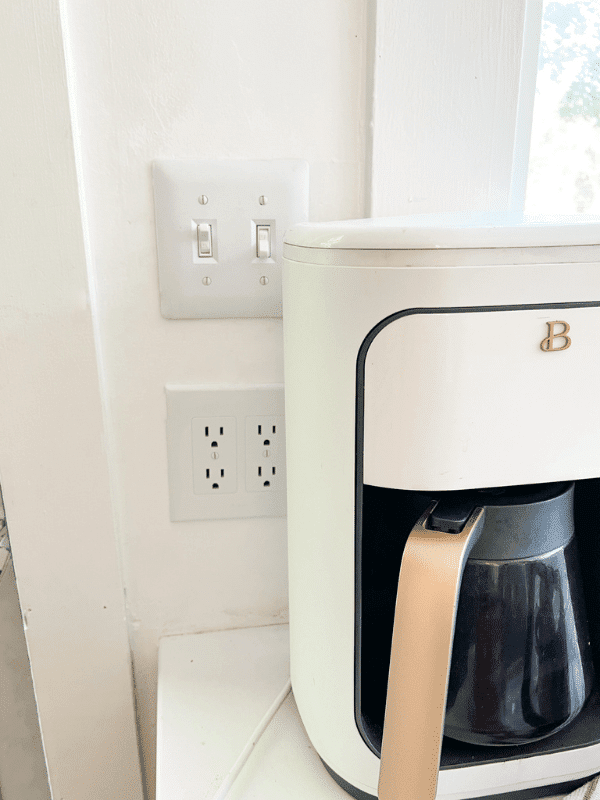
Come Up With A Budget
Whether big or small, your budget will help guide you in picking the right light fixture. If your budget is on the smaller side, don’t be discouraged! There are so many low-budget options that will make a big impact on your kitchen.
Figure Out What Style You Like
Be sure to consider the style of your kitchen when figuring out which light fixtures to buy. If you’re into farmhouses and your kitchen design reflects that, you probably don’t want to buy ultra-modern light fixtures.
Be Sure To Measure
Light fixtures, especially pendants with metal rods, come in all different lengths. It’s important to know your ceiling height so you can choose a light fixture that hangs at just the right height.
Pick A Color Palette And Stick With It
Consider what other materials you have already or will be updating in the room. What color is your kitchen hardware? What color is your faucet and sink? Are you also replacing your door knobs? What color are they or will they be? What about your appliances?
If you’re picking, let’s say, bronze light fixtures, but you have a stainless steel faucet and black hardware, then you may want to choose a different light fixture finish.
It’s ok to choose two different finishes in your kitchen, but I wouldn’t go with three different finishes. It will look a little busy.
The rule of thumb is to tie in your finishes at least two times. For example, your kitchen lighting is gold, and so is your faucet, hardware, and appliance pulls, but your door knobs are black as well as your counter stools and chairs.
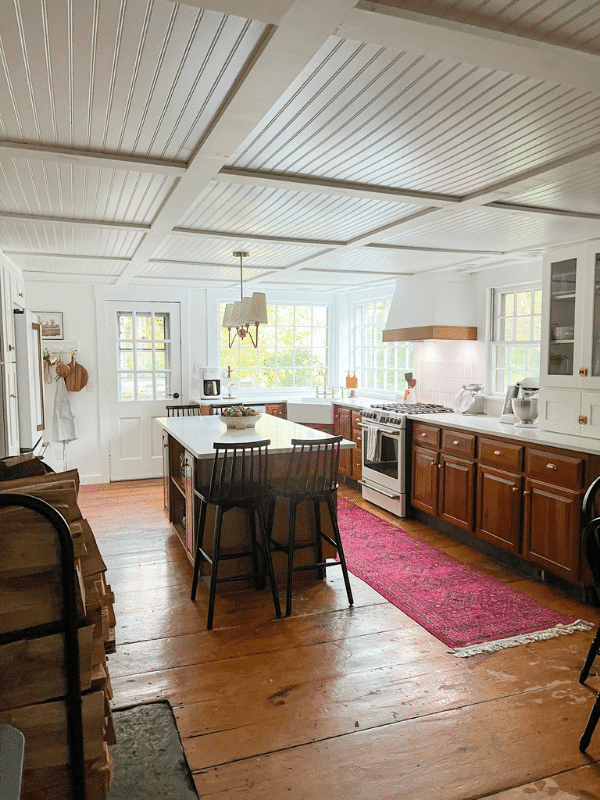
Use The Right Illumination
The right light bulbs totally matter! If you want to create the coziest vibes, use warm bulbs. Or for bright and cheery, go for bright white. You can also add ambient lighting by installing track or recessed lighting on a dimmer.
What Kind Of Light Fixture Should I Put In My Kitchen?
The type of light fixture best suited for your kitchen will depend on its size and layout, as well as your desired level of illumination.
For a small kitchen, a simple pendant light may be sufficient. But for a larger kitchen, more detailed lighting schemes are necessary to provide adequate task lighting.
Another factor to consider when getting a light fixture for your kitchen is the amount of light you need.
If you do most of your cooking and prep work in the daytime, get a skylight or some other form of natural lighting.
However, you’ll need a stronger light source if you do most of your cooking at night. The light bulbs used can also make a difference in terms of energy.
The rule of thumb is that when it comes to lumens, your Kitchen and dining room should be 3,000 to 4,000 lumens, and your Living room: 1,000 to 2,000 lumens. It’s best to use warm lighting in your home rather than bright white. It will give a cozier feel.
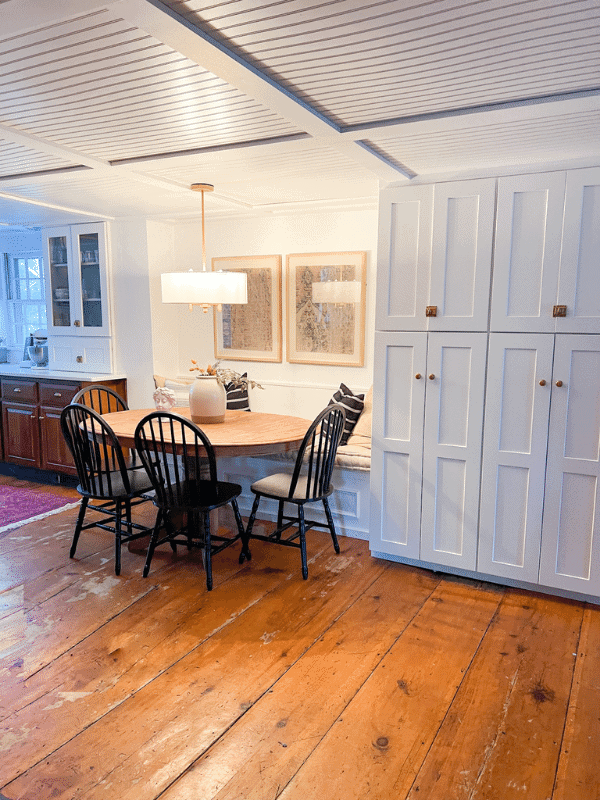
Choose A Focal Point
It’s best to choose one focal point in your kitchen, so it doesn’t feel too busy. You want your eye to be drawn to one place instead of several. In my kitchen, my focal point is my island. So I chose a light fixture that would stand out.
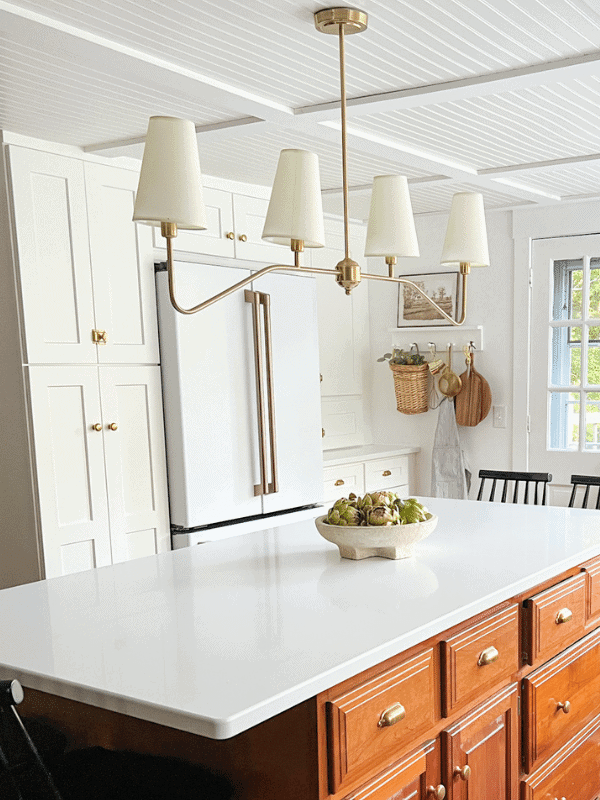
Highlight All Of The Areas In Your Kitchen That You Use
Does your kitchen function for different uses? Highlight them with lighting! In my kitchen, I have an eat-in nook. So to highlight it, I added a light fixture.
Maybe you have a bar station, baking corner, coffee nook, etc. Add lighting! It can hang over the area, sit on the counter like a lamp, or even a sconce with a swinging arm!
Consider Ambient Lighting
Ambient lighting is one of my favorite trends for 2022. Have you seen designers putting a stylish lamp on their kitchen countertop?
Well, the reason they are doing this is to create ambient lighting! It adds the perfect warm accent lighting to create efficiency and output.
LED bulbs are becoming increasingly popular for their low energy consumption and long lifespan.
A simple pendant light or track lighting will look dazzling in your space if you have a modern kitchen with sleek lines and a minimalist aesthetic.
However, if your kitchen has more traditional features, choose a chandelier or wall sconces to relay a rustic charm. Whatever style you choose, make sure it complements the overall look of your kitchen.
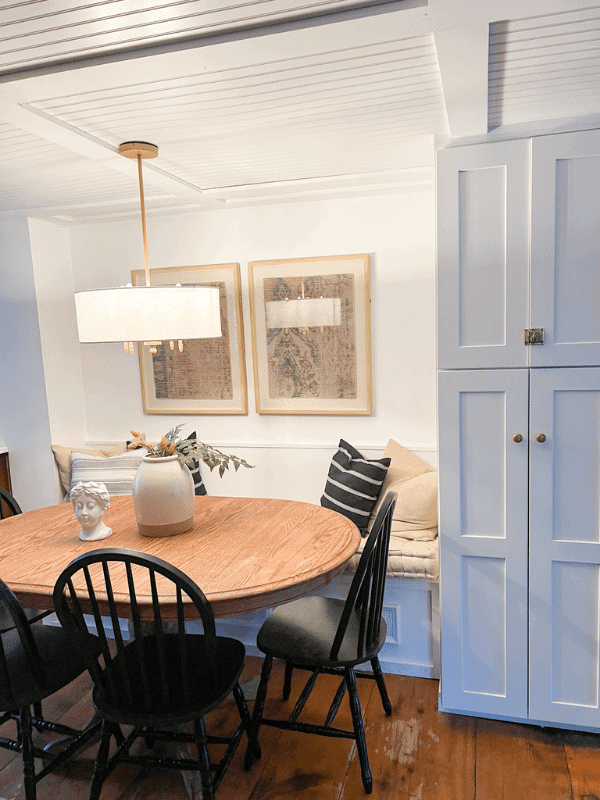
How Do I Pick A Light For My Kitchen Ceiling?
You’ll need to choose a light fixture depending on the style of your kitchen, the size and layout of the room, and the amount of natural light that comes in.
If you have a small kitchen with a low ceiling, a light that doesn’t take up too much real estate or hang too low will make the room feel even smaller.
On the other hand, if you have a large kitchen with high ceilings, you can go a bit bigger with light fixtures and other objects.
Add multiple light sources to your kitchen to create layered lighting that can be adjusted depending on the time of day and the task at hand.
When choosing interior decoration elements, there’s no one-size-fits-all solution. Instead, it’s all about finding the right fixture for your specific space. Feel free to let your creativity shine through!
Should Kitchen Light Fixtures Match?
It’s a common question among homeowners: should kitchen light fixtures match? There are pros and cons to both matching and mismatching light fixtures, so it comes down to personal preference.
If you prefer a cohesive look in your kitchen, matching light fixtures is the way to go. Having coordinated light fixtures can create a sense of harmony in the space. For instance, I went with coordinated lighting about my nook and island. Both are shaded but are different at the same time.
Also, mismatched light fixtures can add personality and charm to your kitchen. If you like the idea of mix-and-matching different styles, then go for different types of light fixtures.
No matter what you choose, as long as you love the look of your kitchen, that’s all that matters.
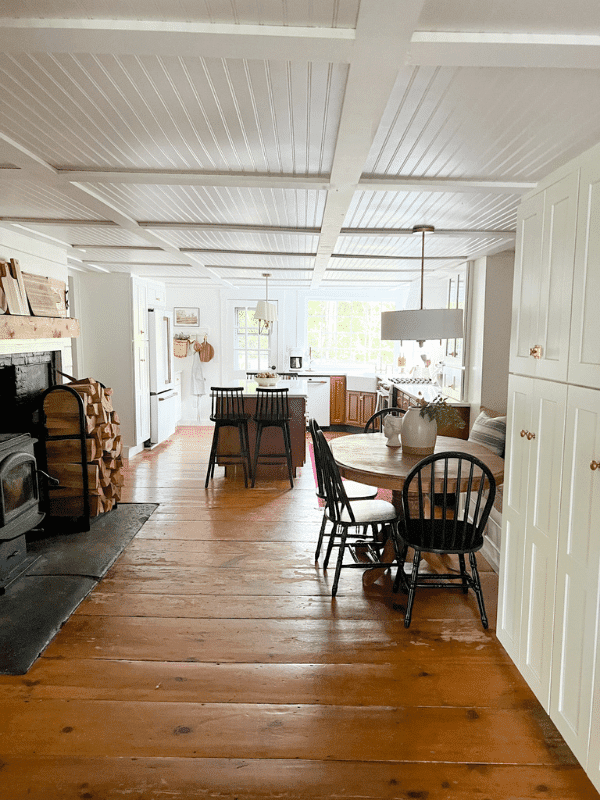
Should Kitchen Lights Be Warm Or Cool?
I prefer warm lighting in my kitchen because I love the rustic charm of older kitchens. But if you have a minimalistic place, go for cool kitchen lights.
If you have a contemporary kitchen with sleek lines and a minimalistic design, cool-toned lighting would be the best choice.
It helps create an inviting and modern space. Similarly, spacious, traditional kitchens with ornate features look sparkling with warm-toned lighting.
Another thing to consider at this point is the mood you want to create in your kitchen. If you want a bright and airy space, cool-toned lighting would be the way to go.
For a more relaxing and intimate space, warm-toned lighting would be a better grab.
What Is The Latest Trend In Kitchen Lighting?
The latest trend in kitchen lighting is to mix and match different styles of fixtures to create a unique look. Gone are the days of uniformity, where all the fixtures in a kitchen were the same style.
Now, homeowners are combining traditional pendant lights with modern recessed lighting or adding accent lights to highlight artwork or architectural features.
LED lighting is another trend in kitchen lighting because it’s energy efficient and creates a warm, natural light that is perfect for kitchens. The options are endless, and the possibilities for personalization are nearly limitless.
Also, Linear light fixtures, like mine below, are pretty popular at the moment.
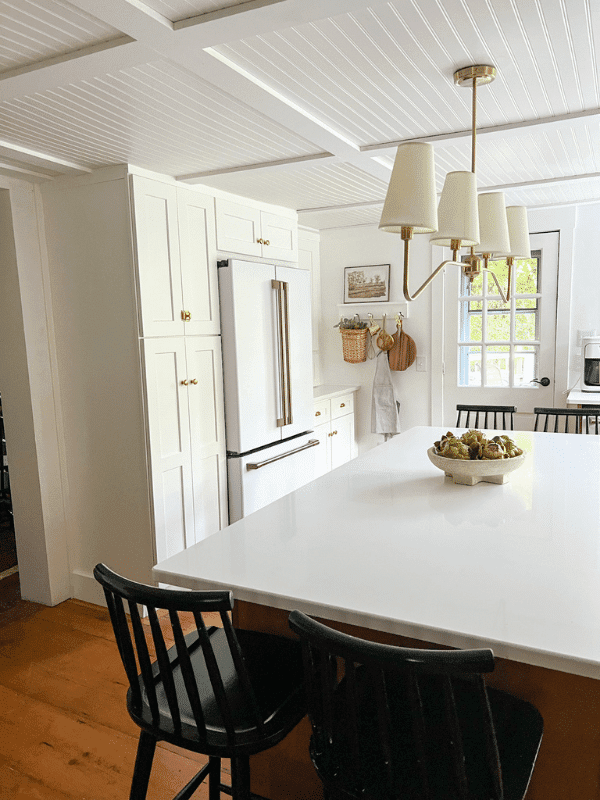
How Bright Should A Kitchen Ceiling Light Be?
There is no definitive answer to this question since it depends on individual preferences and the specific layout of your kitchen.
However, as a general rule of thumb, you should aim for a ceiling light bright enough to adequately illuminate the entire space.
This way, you’ll be able to cook and prep without worrying about any dark corners or areas.
To figure out how bright your kitchen ceiling light should be, start by measuring the square footage of your kitchen space.
Once you have that number, divide it by 9, and that will give you a baseline wattage that you can use as a starting point.
From there, you can increase or decrease the wattage depending on how bright or dim you want the space to be.
You can also get a light with adjustable brightness to tailor it to your needs; another option is to install several lights of different intensities around the room to create a more customized lighting experience.
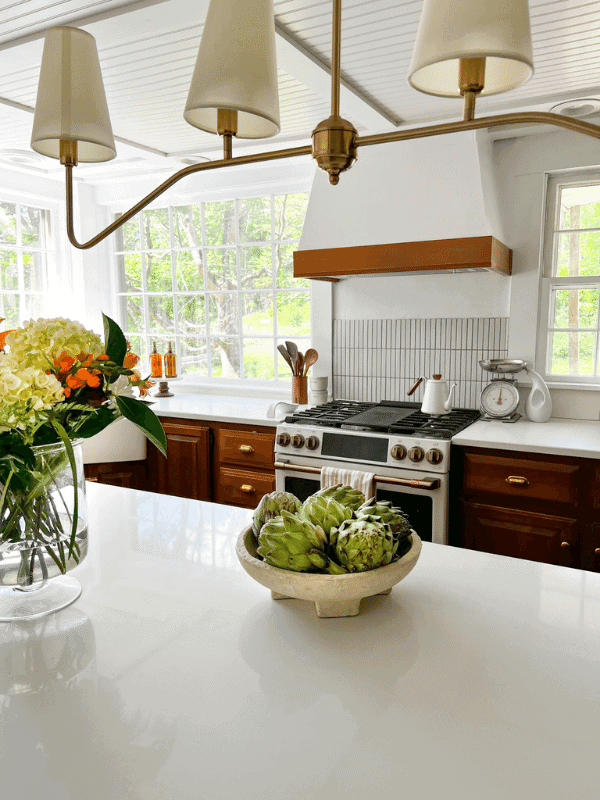
Is LED Lighting Good For The Kitchen?
The movie “The Blob” may have scared us all away from LED lighting when it first came out, but there’s no need to be afraid of these energy-saving light bulbs anymore.
In fact, LED lighting is a great option for the kitchen. Here’s why:
LEDs are much more energy-efficient than incandescent bulbs, so they’ll save you money on your energy bill.
They also emit less heat, so they won’t add to the heat load in your kitchen during the summer. And because they don’t contain any toxic materials, they’re a safe choice for areas where food is prepared.
So if you’re looking for a light bulb that will help you save money and keep your kitchen cool, LED lighting is a great option.
Just be sure to dispose of your old bulbs properly; don’t let them end up in the landfill like that poor blob!
Should Your Kitchen Light Fixtures Match The Faucet?
While it’s not a requirement, it can be aesthetically pleasing to have fixtures that are in the same style and color family.
Having said that, there are many beautiful kitchen light fixtures on the market today, so you don’t need to feel limited by your faucet choice.
Some people also choose to have a light fixture above their sink, providing extra lighting for tasks like washing dishes.
If you choose this option, make sure the fixture is UL-listed (or another safety rating) so that it’s safe to use near water.
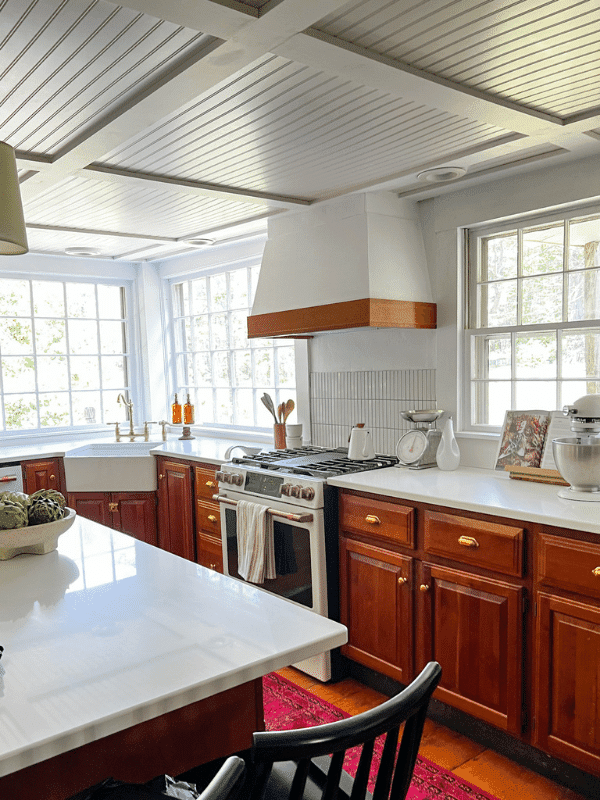
Can You Mix Chrome And Brushed Nickel In A Kitchen?
Some people might think that chrome and brushed nickel are too similar, but I like the sleek, modern look of mixing finishes.
You can mix and match different materials, colors, and textures to create a space that is uniquely yours.
And one of the hottest trends right now is mixing different finishes. Whether you pair chrome with brushed nickel or brass with copper, mixing and matching can add visual interest to your kitchen.
But how do you know if mixing different finishes will work in your kitchen? Here are a few tips to remember:
- Start with one finish as your base. This can be the finish of your cabinets, countertops, or appliances. Then, mix in a second finish for accent pieces. For example, if your cabinets are white, you could mix in brushed nickel hardware or a copper backsplash.
- Choose finishes that complement each other. Before you mix any finishes, make sure they work well together. For instance, brushed nickel and oil-rubbed bronze have similar color tones, so they would pair well together. However, pairing chrome with brass might be too stark of a contrast.
- Create a balance between the finishes. If one finish is dominant, the other should be used sparingly. For example, if you have stainless steel appliances, you might want to mix in copper accents rather than using chrome throughout the space.
Mixing and matching different finishes is a great way to add personality to your kitchen. Just choose finishes that complement each other and create a balanced look.
Can You Mix Brushed Nickel And Black Light Fixtures?
There’s no hard and fast rule when mixing light fixtures in the kitchen. However, many designers recommend sticking to one metal finish for a cohesive look.
That said, brushed nickel and black can make an interesting combination. To avoid a jarring contrast, try using black fixtures as accent pieces.
For example, you can install brushed nickel pendant lights over the kitchen island and black sconces near the sink. Or, hang a black chandelier over the dining table and use brushed nickel track lighting in the prep area.
Are Recessed Lights Going Out Of Style?
In the world of home décor, it can be hard to keep up with the latest trends. One minute, shag carpeting is all the rage, and the next minute, it’s all about hardwood floors.
So what’s next for home lighting? Are recessed lights going out of style?
It’s true that in recent years, there has been a shift away from recessed lighting. Many homeowners now opt for more creative options, such as pendant lights or track lighting.
However, this doesn’t mean recessed lighting is going out of style altogether. In fact, when used in the right way, recessed lights can still be a stylish and functional addition to any home. I used them around my sink to add more light. Where traditional fixtures would block the view, recessed lighting adds lighting without the fixture taking up any space.
The key is to use recessed lights in moderation. Rather than relying solely on recessed lights to light up a room, try combining them with other types of lighting.
For example, use recessed lights to highlight a piece of art or architectural element in your home.
Or use them to provide task lighting in your kitchen or bathroom. When used in combination with other lighting fixtures, recessed lights can help create a warm and inviting atmosphere in any home.
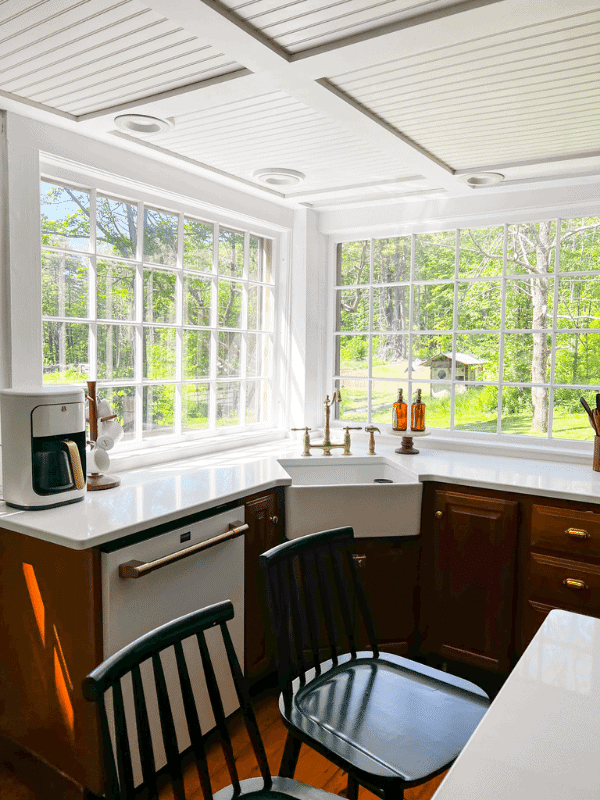
Are Kitchen Pendants Out Of Style?
Trends come and go, and what was once cutting-edge quickly becomes passé. So, is it time to say goodbye to kitchen pendants?
Not necessarily. While they may not be as popular as they once were, pendants can still add a touch of style to any kitchen.
Whether you opt for a classic hanging lantern or a sleek and modern globe light, a pendant can add visual interest to your cooking space.
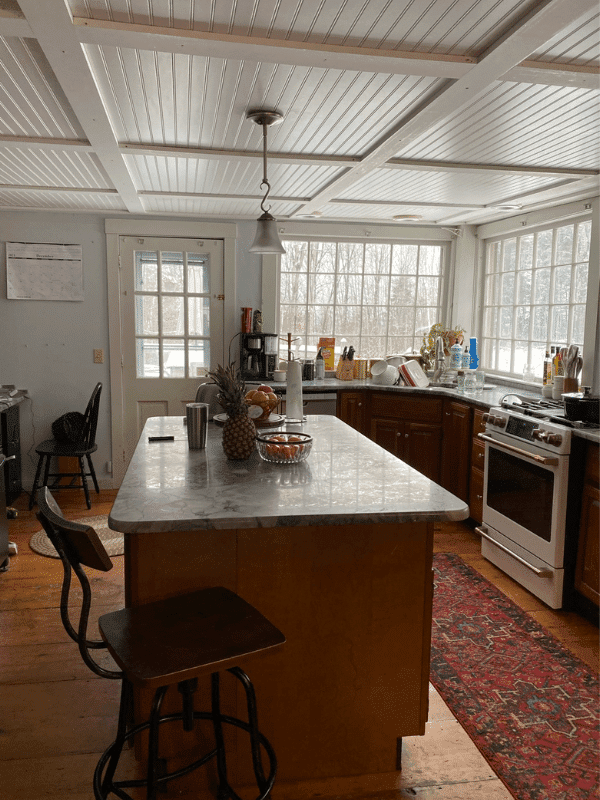
What Type Of Lights Go Over The Kitchen Sink?
Over the kitchen sink, people typically put up task lighting. This is a light that is bright enough to illuminate the work area well, so that you can see what you’re doing.
Incandescent or fluorescent bulbs are good for lighting your kitchen. However, there are now more energy-efficient options available, such as LED bulbs.
Pendant lights and recessed lights are both popular choices over the kitchen sink. Pendant lights hang down from the ceiling and can be adjustable so that you can direct the light where you need it most.
How Many Lights Should Be In A Kitchen?
The number of lights in a kitchen depends on the size and layout of the space, the type of activities that take place there, and the personal preferences of the homeowners.
A small kitchen with a simple layout may only need a few task lights, while a large kitchen with multiple work zones may benefit from a mix of task and ambient lighting.
In addition, some people prefer brighter lighting for cooking and food prep, while others find it more relaxing to have a softer light for dining and entertaining.
The best way to determine the ideal number of lights for your kitchen is to consult with a lighting designer or electrician. They can help you create a custom lighting plan to meet your needs and complement your space.
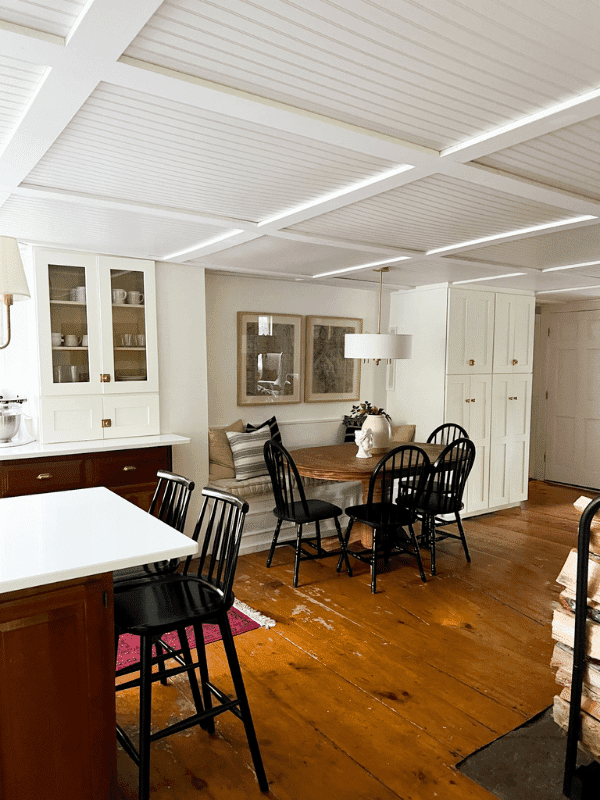
Rounding Up
When updating my kitchen lighting, I got creative with my choices and mixed and matched different fixtures to create a unique look.
I started with a recessed lighting around my sink and along the countertops.
Although I didn’t opt for under-cabinet lighting (since my only uppers sit on the countertop) It would have been a great way to add more ambience to my kitchen.
I did add a statement linear chandelier to my island as the focal point of my kitchen. Not only does it add adequate light, it makes a statement as well.
Lastly, I added a coordinating pendant light fixture about my kitchen nook to help tie to two fixtures together with out them being identical.
I was also sure to change out my light switch covers and choose finishes that coordinated with the overall design of my kitchen.
Thats it for now! I hope this helped!
Be sure to pin for later!
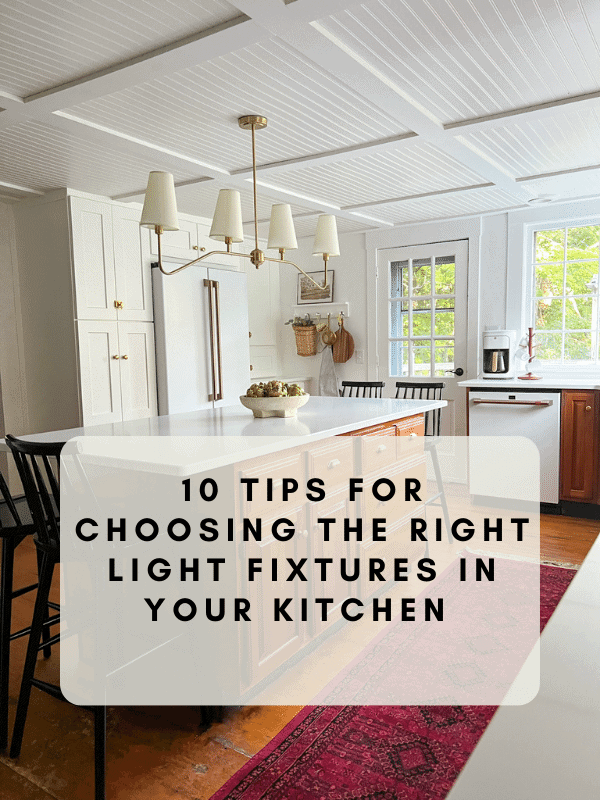
Want to shop this post? Click on an image below to be redirected to the link. *These links are affiliates and if used I make a small commission at no cost to you. Thanks for supporting the brands that support this blog of mine!
Thanks for reading!
Chat soon,
Kori
